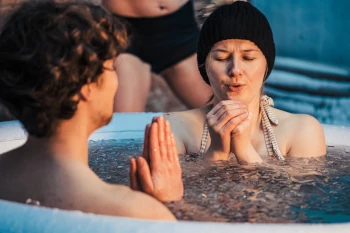Experts predict very warm temperatures with almost 40 ° C. I still don't have to do without cold, because I go into the homemade ice pool at 1.6 ° C. How exactly? In a freezer!
Every cold plunger Cold Plunge again . But with a little preparation, Cold Plunge even in the warm months! In this article I will show you how you can enjoy the advantages of Cold Plunge all year round.
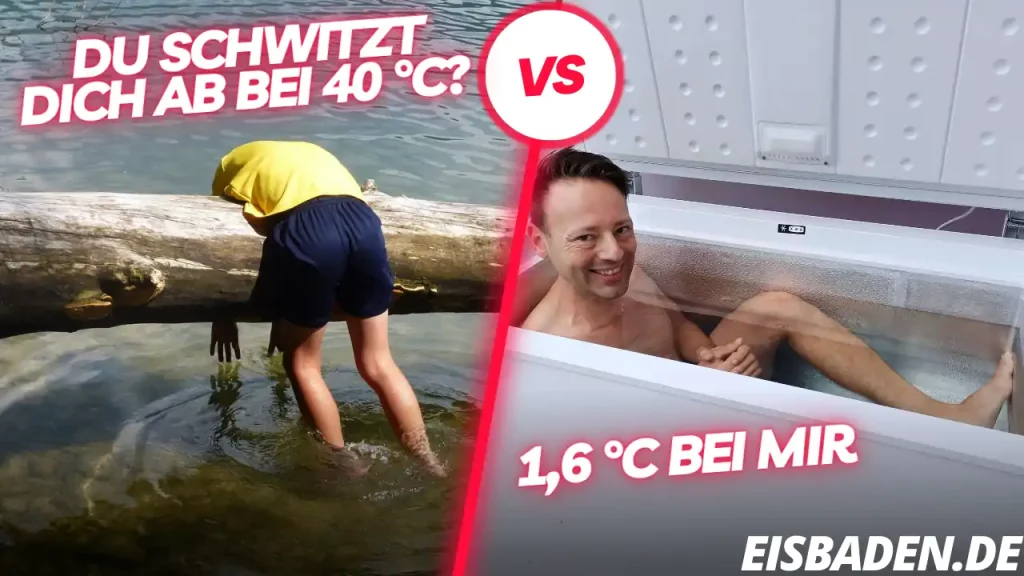
Table of contents
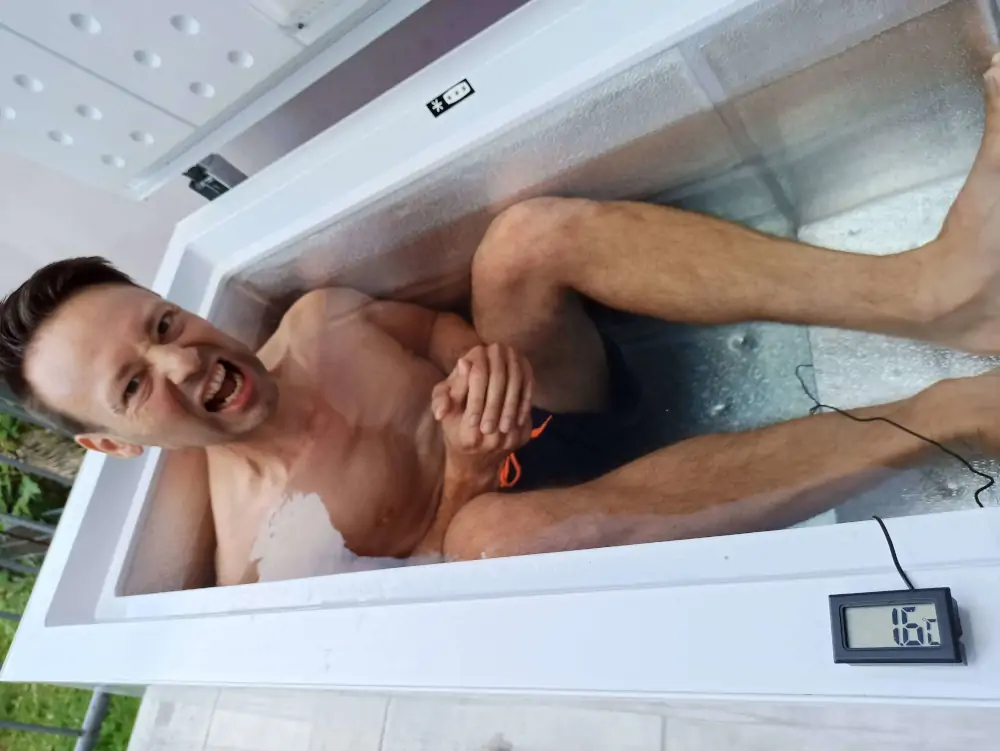
Shower cold? Well, real cold plunger want something really cold 🙂
And that's why cold water has to be used in large quantities. If you are not lucky enough to live next to a cold mountain stream, you will basically face these five options:
- Wait until winter comes
- Cold
- Produce ice cubes and then make Cold Plunge in a bucket, bin or cold plunge tub
- Freezing chest or a freezer convert
- Use professional cooling systems
Since it is not really possible to wait until the winter and to shower cold, and to produce ice cubes in sufficient quantities to cool down 200 liters of water, there are still professional systems or a freezer for the Cold Plunge . The latter is easier than you think, but a few steps are already necessary.
How does a freezer work?
Most households have this: either a TK compartment is installed in the refrigerator or, if you have more space, as a separate device, which is usually in the basement or the garage. The functions of freezers (or also freezer in English) vary something depending on the manufacturer and model, but basically they work as follows:
The freezer contains an electrically operated compressor . The compressor is the heart of the freezer because it compresses a refrigerant gas, which increases its pressure. The compressed gas then flows into a capacitor , which is usually on the back of the chest. The capacitor consists of thin metal pipes that can efficiently dissipate the heat. The refrigerant cools down by the heat output and condenses into a liquid state. The liquid refrigerant then comes into an evaporator that is located inside the freezer, and absorbs the warmth there and evaporates again. The gaseous refrigerant is then led back into the compressor like in a circulation and the game starts all over again.
Due to this recurring circulation, heat from the interior of the freezer is continuously dissipated, which after a while means that the chest can reach sub -temperatures in the interior and can therefore also act as an ice pool.
Which sizes are best suited?
You should pay attention to the right size when chest. It is advisable to take a freezer that is not oversized, because this gives you much more to cool. But it shouldn't be under -dimensioned either, because then you may not fit in. In general, it is more advisable to take a smaller chest, because it is more space -saving, but also more energy -efficient and can cool down the amount of water faster. The most important thing is, of course, that you fit in well, but you don't have to stretch your legs completely or put in.
My freezer has the following dimensions:
Inner length: 92 cm
inner depth: 65 cm of interior width: 46 cm
That's enough for me, because the compressor also takes up space. That means I can't sit on it, otherwise I'm too high up and my shoulders are not covered with water.
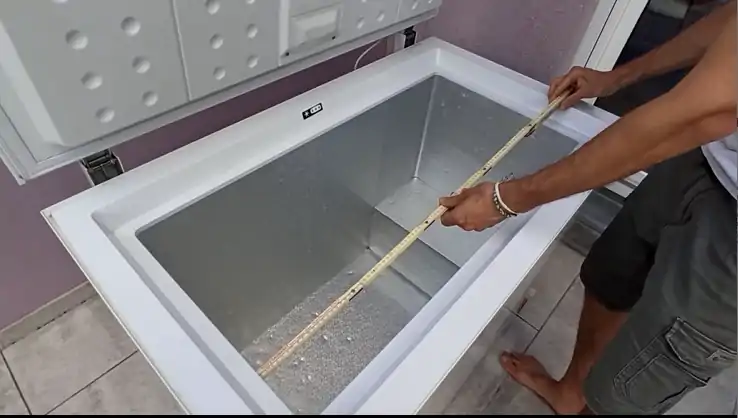
Which freezer and how many liters should it have?
I have invested in a used Hanseatic freezer. This is quite small, but I fit in with 1.83 meters so that I am completely covered with water. The chest has a volume of 250 liters, whereby I only need about 150 liters, because my body fills the rest well.
The energy consumption was not really decisive for me, since the chest runs for a maximum of 2-3 hours a day and usually only when the sun is shining.
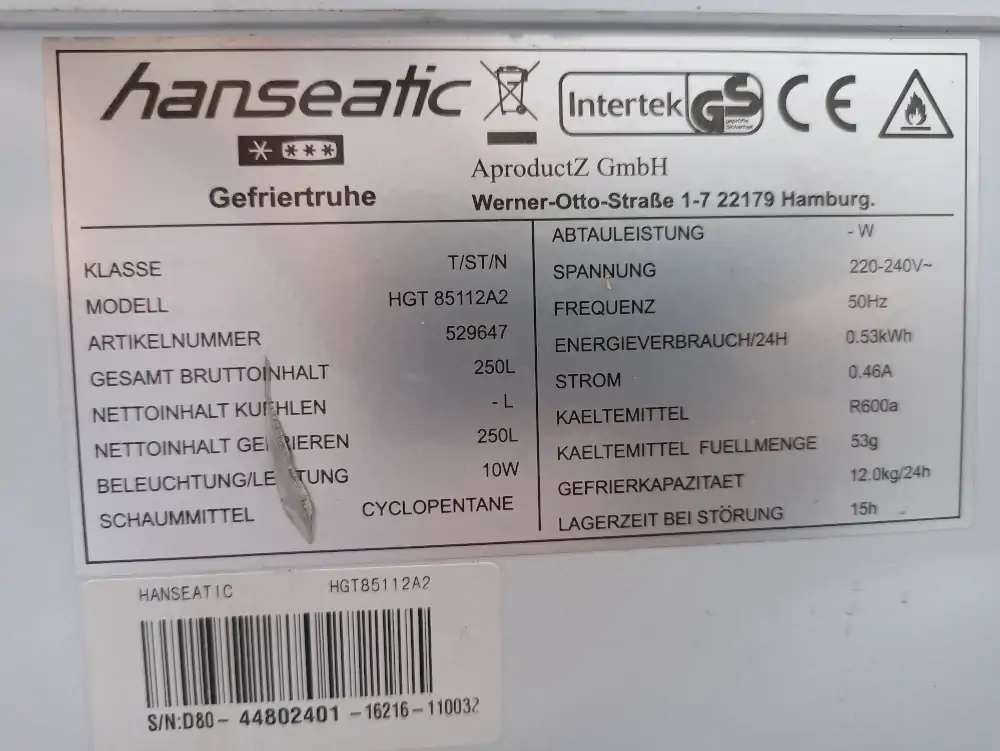
How do you prepare your freezer for the Cold Plunge ?
In principle, that's super simple. You need commercially available sanitary silicone. I took transparent silicone so that you don't see the joints exactly and also paid attention to the quality (just bought the most expensive 🙂), because I definitely never wanted to risk water. In addition, you need a little soap water to smooth and a kitchen roll to wipe away the excess silicone. And if your chest has a process, then you should also secure the plug with a silicone band and a seal. I didn't do that on the first attempt and it licked all the time.
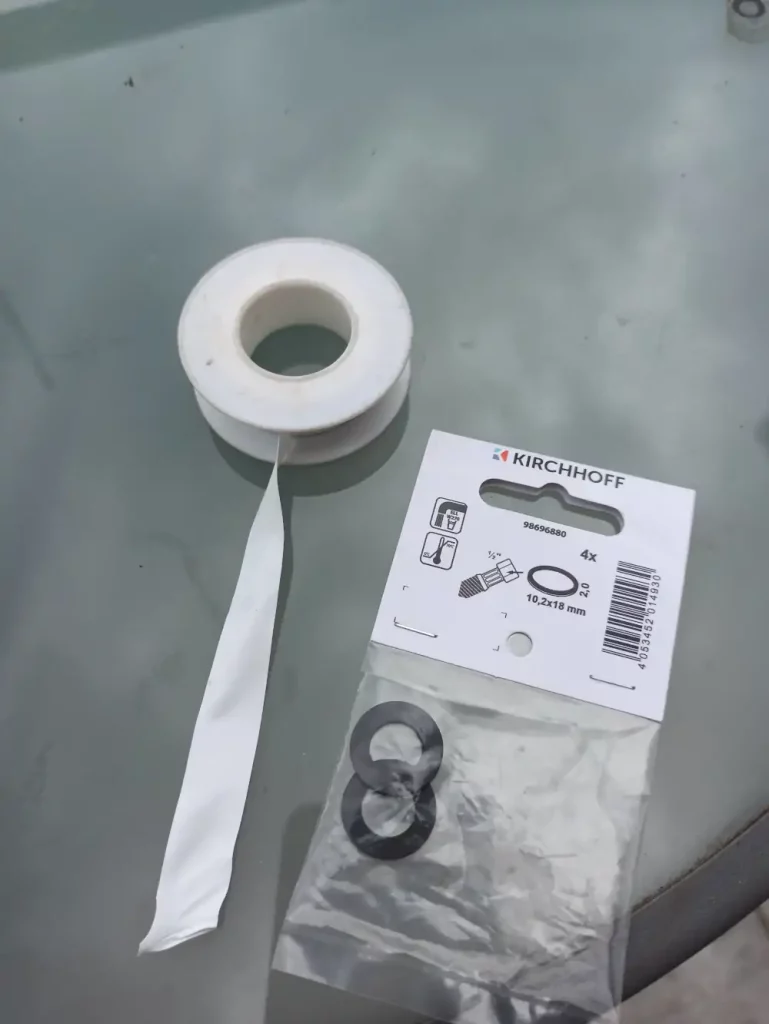

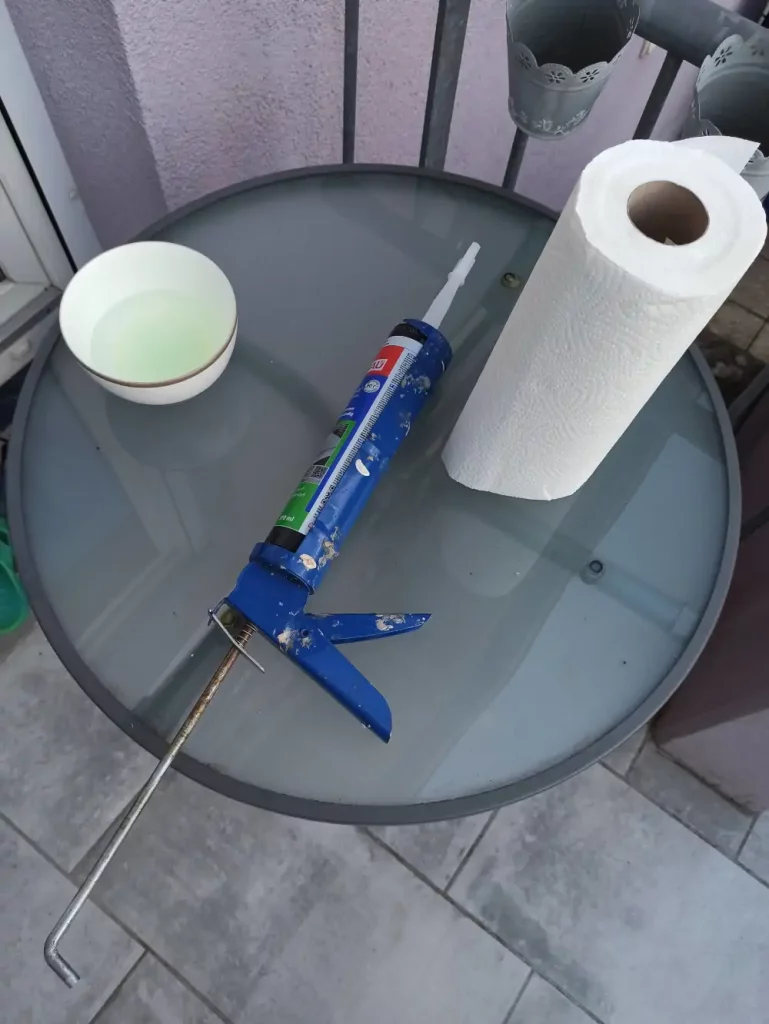
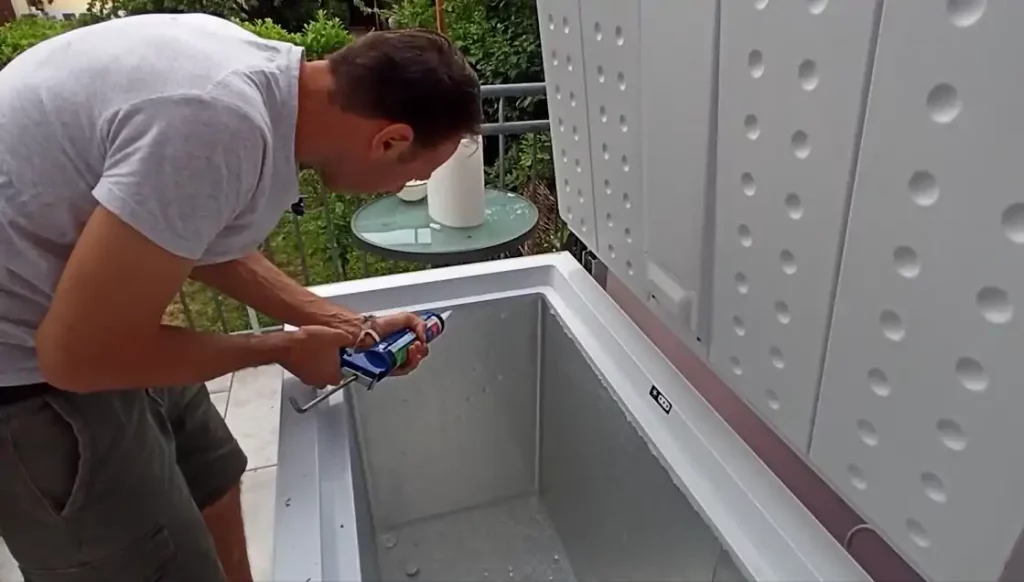
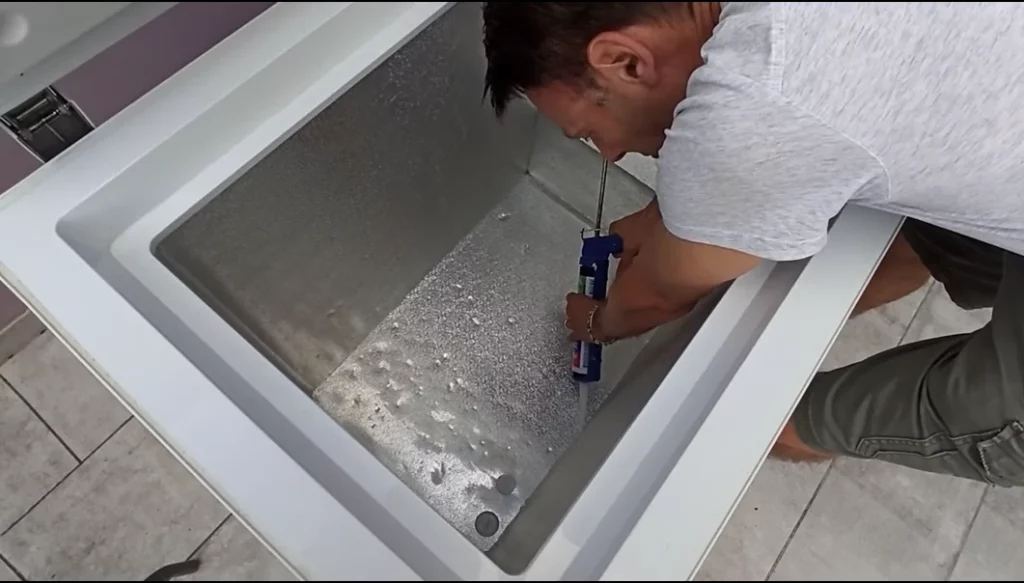
And then it's time to use. Simply do a good strip of silicone on top wherever you see a gap and then smooth out with your finger. Then drive over with the soapy water.
Wrap the (plastic) thread of the plug with a silicone band and do the seal on it. The whole thing is already done! Then let dry overnight and pour water the next day. Nothing should run out through your joints. If the floor around the chest is dry and the water level remains the same, you can insert the plug and cool your chest.
Another little hint about the plugs: you should leave them inside if possible, because the water should also be able to be drained off. If this is not possible, you would have to pump it out or take it difficult to remove it with a different container. I have already seen some prepared freezers in which the plug was glued.
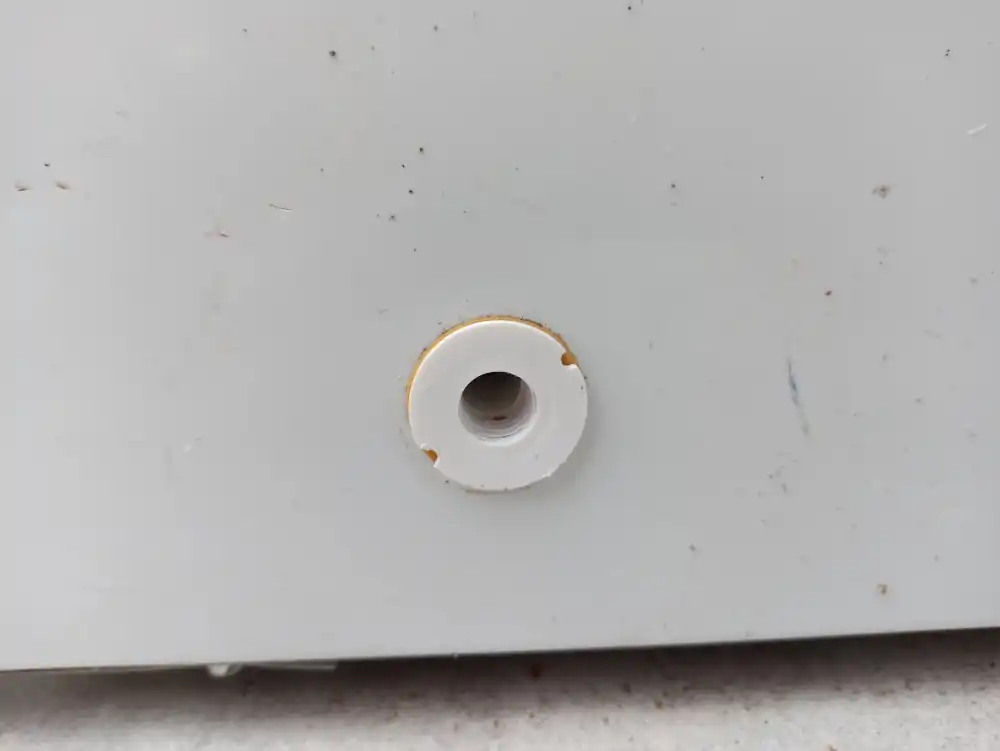
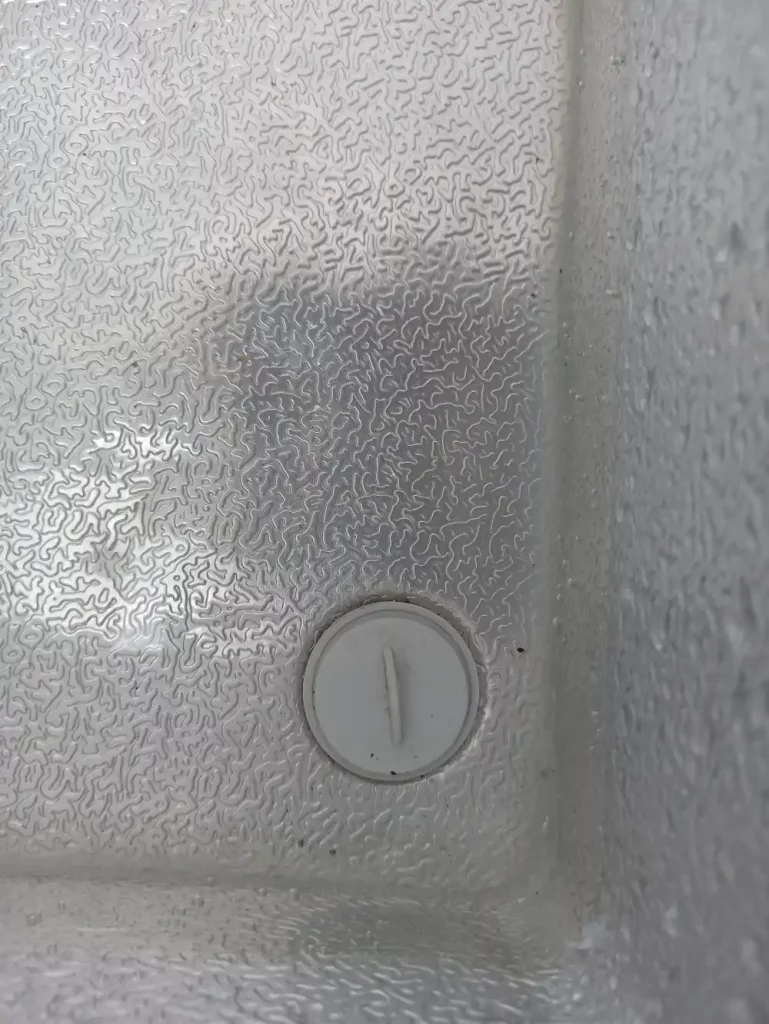
And so the freezer filled with water looks like - the water remains inside and only has to be cooled.

What does the final result look like?
So Cold Plunge works in a small but sufficiently large freezer. And it gets really cold too! You can make the chest as cold as you want - if you let the freezer run permanently, then you have an ice block afterwards. For me it got 1.6 ° C cold.
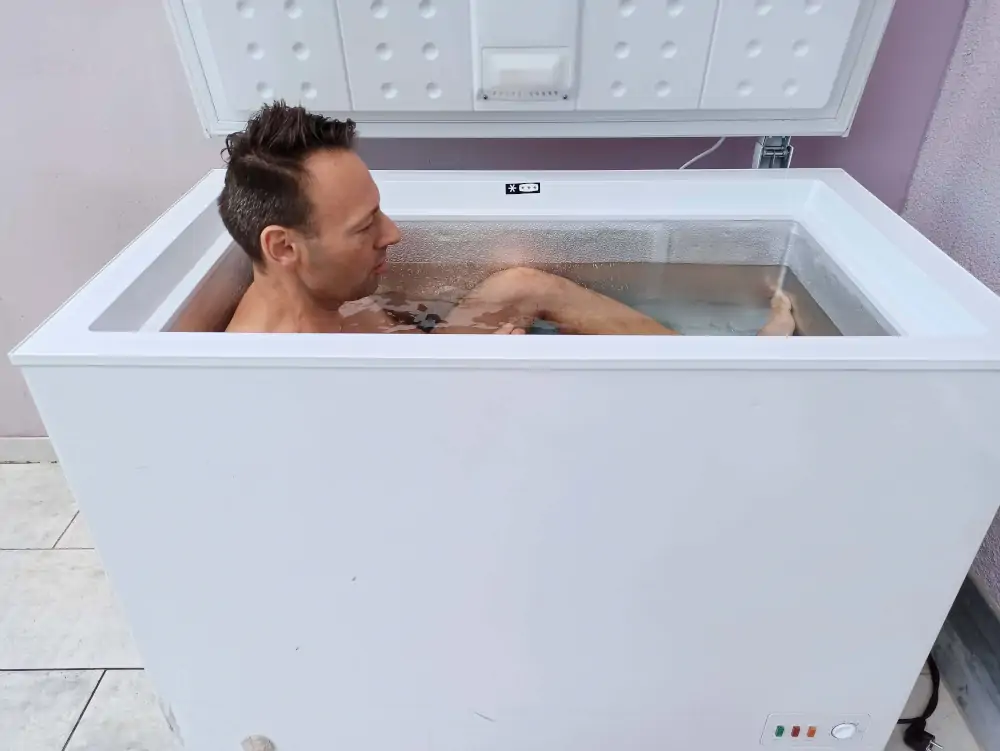
What should you pay attention to?
In any case, you have to make sure to interrupt the power connection, i.e. pull the plug completely out of the socket so that you do not risk getting an electric shock.
How long does it take for the water to cool down?
For me it took about 12 hours for the water to be cooled down to 1.6 ° C. And it shouldn't have been that cold, you would get faster to an actually sufficient temperature of 4-5 ° C. Depending on the amount of water, I estimate the cooling circuit to reduce a temperature of 1-2 ° C per hour. In the beginning, more and later, if the temperature is already low, less.
What are the costs for the chest and sealing?
I spent 80 euros for a used freezer. In addition, I had to organize a transport for it that cost me 30 euros. In addition, I spent about 10 euros for silicone and seals. In total, we are around 120 euros .
What is the electricity consumption for an ice pool?
The freezing chest scores when it comes to electricity consumption, because the system is designed to cool as efficiently as possible. The chilled water remains in an isolated container, which is why there are little efficiency losses. A normal freezer consumes between 100 and 300 watts of electricity depending on the size and model. With my chest, it is around 120 watts due to the small dimensions, which means that it can be perfectly operated with my balcony power. In principle, the electricity is free and green. The energy consumption per 24 hours is given by the manufacturer at 0.53 kWh. Since the chest has to run for a maximum of 12 hours to cool down really properly, the need would only be 50% of the 0.53 kWh given 0.26 kWh * 0.4 EUR = approx. 11 cents per ice bath . And that is the calculation if you pull electricity from the socket conventionally - with the balcony power plant it is of course even cheaper.
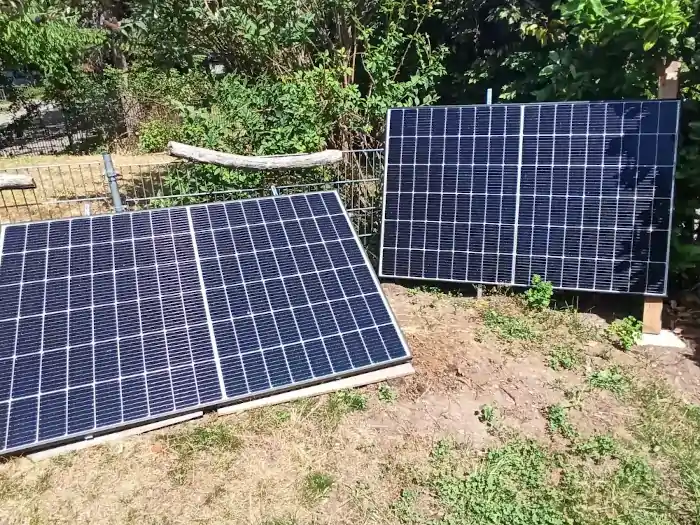
I also use the option of removing water for the Freezer from my rainwater tone, which saves water. That is my type of green circulation.
What are the alternatives to frozen chest?
There are professional systems that mostly use the through -run coolers from the aquarium technology and cool the water in a circulation. Depending on the device, this goes really quickly within 3-4 hours from 17-20 ° C to 4 ° C. And for recurring cold plunge appointments, depending on the temperature, you only have a cooling time of 1 hour. Of course, these devices also consume more electricity because the engine is stronger, but also because the water is pumped out of the pelvis into the cooler and then back. So there are more energy efficiency losses than with the freezer.
My conclusion
to make Cold Plunge at home around the year It has the great advantage that you temper the water pretty closely and also as a beginner: can get used to the cold slightly and gradually increase.
Other major advantages are the relatively favorable acquisition costs (for a new freezer is around 300 euros), the quick and uncomplicated grouting with silicone and use for different purposes. Due to the Cold Plunge and the silicone joints, the freezer does not lose functionality, it has already served well at our garden parties.
The disadvantage of a freezer is that it is of course designed for the cooling of drinks and food. If you prepare and use it for Cold Plunge , you will probably lose the legal guarantee, which is quite annoying if the chest should give up your mind prematurely.
And with a freezer you need longer to cool the water. With a professional system, this goes within 3-4 hours, while it is best to cool on a freezer a day before the planned ice cream pool. The advantage of a freezer is that if the water is cool, you actually only have to cool it for the next Cold Plunge session for 2-3 hours.
And then we have the topic of electricity. Electricity and water do not get along well, which is why you have to make sure that you always pull out the cable. The engine also runs when checking the temperature in between. Since the plug is drawn every time, it is tedious, but you should never forget to completely separate the device from the electricity when you touch the water.







